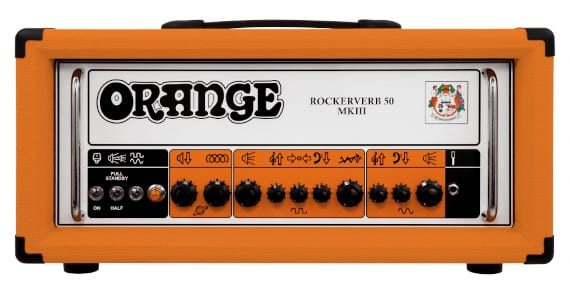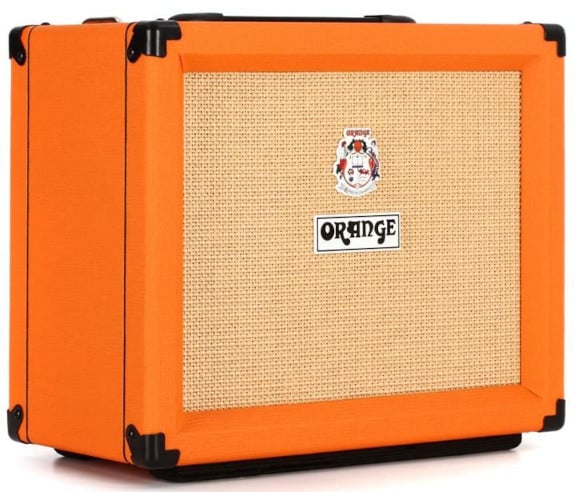Table of Contents
In the world of guitar amplification, there are many brands that make excellent products. They normally focus on certain sounds and functionality to stand out from the rest. But in this Killer Rig article, I will be comparing Fender Vs Orange amps to see how they differ.
One will be a better fit for you in terms of sound and even price point. These are two companies that have been around for a long time. So we know that they are durable and can handle whatever you throw at them. But what about the rest? Let’s check them out.
Quick Summary
- Fender amps are known for their bright and sparkling clean tones, while Orange’s models offer a warm and more aggressive distorted sound.
- Fenders are commonly associated with blues, rock, and country genres, offering versatility and a classic sound. On the other hand, Orange amps are favored in genres such as hard rock, punk, and metal, delivering a raw and powerful tone.
- For entry-level solid-state combo amps, Fender offers models like the Mustang LT25, while Orange provides options like the Crush 20RT. In the valve (tube) combo amp category, Fender is known for the Blues Junior, while Orange offers models like the Rocker 32.
Fender vs Orange Amps
Fender amps are known for their classic American tones and versatility. Orange amps are revered for their thick, British rock sound.
When comparing them, it’s crucial to consider factors such as tone, aesthetics, and features. Fender amps are known more for their clean tones. But also their ability to handle a decent range of musical styles. If you need slightly crunchy or a good pedal platform, this is the brand for you.
On the other hand, Orange amps are loved for their punchy, overdriven tones that excel in rock and metal genres. When you need a heavy sounding metal tone, Orange will do a better job.
Additionally, the features offered by each brand should be taken into account. Fender amps often come with a range of built-in effects and advanced controls, providing musicians with greater flexibility in shaping their sound.
Orange amps typically have fewer onboard effects but offer a simple, no-nonsense approach to tone shaping.
Pro Tip: Before making a final decision, it is highly recommended to test both Fender and Orange amps in person, as the sound and feel can vary depending on the specific models and preferences.
Comparing the Tones
When it comes to comparing the tones of Fender and Orange amps, there are some key differences worth exploring. Each brings its own qualities to the table, making the choice between them a matter of personal preference.

Main Differences
The key differences between Fender and Orange amps can be observed in various aspects of their tones and controls. To illustrate these differences, I have made a table based on what I hear when using amps from these companies:
| Aspect | Fender Amps | Orange Amps |
|---|---|---|
| Clean Tone | Bright and crisp | Warm and smooth |
| Distorted Tone | Classic overdrive | Aggressive distortion |
| Music Styles | Blues, rock, country | Hard rock, metal |
Clean Tone
A Clean tone refers to the pure and unmodified sound produced by an amplifier. It is characterized by its clarity, lack of distortion, and absence of any effects or added coloration. You might also hear the term “Headroom” thrown around in this regard.
When comparing Fender to Orange amps, there are big differences in their clean tones.
Fender amps are known for their bright, but full-bodied clean tones. These amps produce a smooth and balanced sound with a slightly scooped midrange.
The clean tone on a Fender amp is often described as sparkling and chiming, making it ideal for genres such as jazz, blues, and country.
Orange amps have a clean tone that is warm and punchy. Their clean sounds have a gritty edge with more pronounced midrange frequencies.
This makes Orange amps well-suited for genres like rock, punk, and alternative music where a more aggressive clean tone is desired.
Not all players need a clean tone. There are many metal guitarists who would never use one. But if you do, and it needs to be crystal clean, then Fender is the better brand for that.
This is why many famous artists use more than one amp in the studio. And Fender is normally the go to for cleans.

Distorted Tone
The distorted tone generated by both Fender and Orange is a primary factor in selecting the right amplifier.
Fender amps are appreciated for their distorted tone by blues and rock guitarists. This is because the tone is thinner and not as aggressive. It’s often very bass heavy, which can also make it sound muffled with certain guitars, especially at higher gain levels.
But they retain clarity quite well due to their bright nature, and with a Stratocaster, they provide a tone like no other.
Orange amps produce a more aggressive and gritty distorted tone that appeals to heavy metal and punk musicians.
The sound is shaped for a thicker tone, but as you increase the gain, it also can get sort of fuzzy. Bands like Slipknot use Orange amps for their punchy, high-gain tones, so they work exceptionally well and will cut through a mix.
A great feature of Orange Amps is their ability to generate harmonic richness in the distorted tone. The combination of their circuit design and high-gain capabilities results in complex harmonics, adding depth and complexity to the overall sound.
It’s important to note that these observations are based on popular amp models from both companies.
The classic Fender Deluxe Reverb amp is praised for its smooth, tube-driven distortion, while the iconic Orange Rockerverb series offers a more aggressive and modern approach to distorted tones.
Check out this video showcasing the sounds of the Orange Crush 12 and the Fender Champion 20:
Functions and Controls
When it comes to the controls and functionality, this is where things can be quite different. But this also depends on the technology being used in the amplifier model.
Tube Amps
When it comes to the tube amps made by each brand, things are pretty similar. You will find the usual gain, treble, mids and bass controls along with some spring reverb or tremolo effects.
Some models also offer a second channel and the addition of a foot control to switch the functions.
Where things are different is in the inclusion of an effects loop with the Orange amps. This is because they distort a lot more, and so a loop is necessary for high quality sound from your effects.
Solid State and DSP
When it comes to solid state models, Fender offers a greater range of functionality and control. DSP models come with build in emulation, which can provide a greater range of sounds. They also feature tuners, effects, and other peripherals that can shape your tone.
Orange amps don’t get into a large range of functions, even with their solid state models.
They tend to keep it simple by offering a tuner and maybe some effects at the most. They stick with what they know their customer base wants, and it works quite well.
If you want to learn more about the amp settings of these two brands, check out these articles I wrote that goes a lot deeper:
Design and Aesthetics
Next, you need an amplifier that matches your look. So let’s explore how these two amp brands design their aesthetics to make sure they fit.
Fender’s Design
Fender amplifiers are known for their classic appearance. The typical design features a silver grille cloth, black control plate, and a logo that has become synonymous with quality.
The construction is solid, with a focus on functionality and durability. The aesthetics of Fender amps reflect a timeless elegance, often associated with the early days of rock and jazz. This makes it easy to fit in with the look of most players.
There are many models that have a tweed look to really bring back that classic vintage look. Otherwise, there really isn’t anything super modern, especially in the tube amp options.

Orange’s Design
Orange amplifiers are recognized for their flashy and bold appearance. The bright orange casing and unique graphics make them easily identifiable.
The design is robust, with chunky knobs and rugged construction, reflecting a straightforward approach to music.
The aesthetics of Orange amps are aligned with the genres they are often used in, such as rock and metal, symbolizing a more aggressive musical style.
Although not everyone wants a bright orange pumpkin amp on stage as it might not work with their look. In this case, you can find some models that have black tolex instead.
It’s also worth nothing that Orange typically doesn’t use text on their control panels. They are symbols instead. So when you go to tweak your sound, you will have to turn knobs to see what they do first. At least until you learn what the symbols mean.

Comparison
The design differences between Fender and Orange amplifiers are clear and cater to different tastes and musical genres.
Fender’s design emphasizes classic elegance and a connection to musical traditions, while Orange’s design is more contemporary and resonates with musicians looking for a more assertive presence.
Choosing between these two brands may come down to personal preference in aesthetics, as both offer quality construction and functionality.
The visual appeal of an amplifier can be an essential factor for some musicians, and both Fender and Orange provide options that reflect their respective musical identities.
Price Differences
These two companies are experiences builders. As such, they both offer a premium product but do have many price tiers. To get a better idea, we will look at both solid state and tube offerings to see how they compete.
Solid State Model Comparison
These models were chosen because they are some of the more popular solid state offerings from both companies.
| Model | Wattage | Price |
|---|---|---|
| Fender Frontman 10G | 10W | $99.99 |
| Orange Crush 12 | 12W | $109.00 |
| Fender Champion 20 | 20W | $149.99 |
| Orange Crush 20 | 20W | $199.00 |
| Fender Acoustasonic | 40W | $249.99 |
| Orange Crush 35 | 35W | $299.00 |
| Fender Mustang | 50W | $279.99 |
| Orange Crush CR60 | 60W | $599.99 |
Tube Model Comparison
I chose these models because they are the popular tube amps available from both companies. These are the MSRP found at retailers like Sweetwater. All prices are in US Dollars.
| Model | Wattage | Price |
|---|---|---|
| Fender Bassbreaker 007 | 7W | $549.99 |
| Orange Dark Terror | 15W | $649.00 |
| Fender Bassbreaker 15 | 15W | $749.99 |
| Orange Rocker 15 | 15W | $699.00 |
| Fender Bassbreaker 30R | 30W | $1099.99 |
| Orange OR30 | 30W | $1799.00 |
| Fender Hot Rod Deluxe IV | 40W | $999.99 |
| Orange Rockerverb 50 MKIII | 50W | $2149.00 |
Check out our guide for Best Guitar Amps under $500 here.
Conclusion
As you’ve learned, both are quality brands! They produce great amplifiers for electric guitars. Now that you’ve got a good sense of what each brand has to offer. The next step is to figure out what’s most important to you. Tone, music style, design, or price?
Hopefully, this guide has given you all the information needed to choose which one is right for you. Will it be Fender or Orange? Either choice will provide you with great tone.

